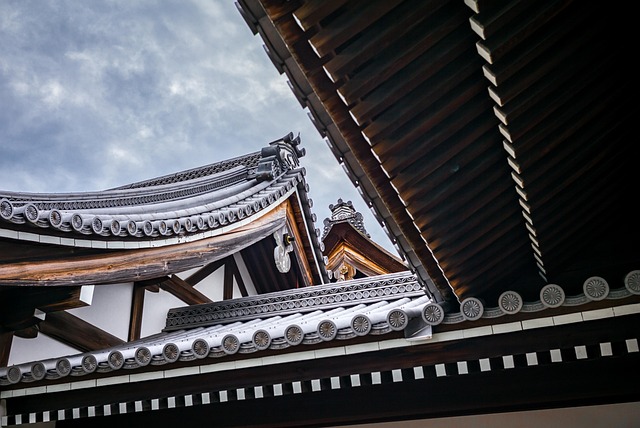Green roof installations offer a sustainable solution by integrating vegetation into building structures, providing environmental benefits such as improved energy efficiency, biodiversity fostering, and water management. Durable materials like metal, slate, or clay are ideal due to their longevity, recyclability, and resistance to harsh weather conditions. Metal, specifically steel, is popular for its strength and recyclable nature; slate offers timeless beauty and resilience; while clay tiles provide local sourcing, excellent durability, and enhanced insulation. These eco-friendly choices align with green roof goals of promoting biodiversity, water conservation, and reduced carbon footprints in urban development.
“Discover the future of sustainable roofing with an in-depth look at durable, recyclable materials for your next green roof installation. From metal’s versatile appeal to slate’s timeless elegance and clay’s traditional eco-friendliness, this guide explores top choices for environmentally conscious homeowners. Uncover the profound environmental benefits of green roofs and gain insights into why selecting robust materials is a smart step towards a greener future.”
Understanding Green Roofs and Their Environmental Benefits
Green roofs, also known as eco-roofs or living roofs, are an innovative and sustainable solution that involves planting and growing vegetation on top of a building’s structure. This environmental approach goes beyond traditional landscaping, offering a range of benefits for both the structure and its surroundings. By incorporating green roof installation, buildings can reduce their carbon footprint and contribute to urban ecosystems.
One of the key advantages is improved energy efficiency. The vegetation acts as natural insulation, helping regulate indoor temperatures, which reduces the need for heating or cooling systems. This not only lowers energy consumption but also minimizes greenhouse gas emissions. Moreover, green roofs provide a habitat for various species, promoting biodiversity in urban areas. They can also help with water management by absorbing and slowing down rainwater, reducing the risk of flooding and allowing for more sustainable drainage systems.
The Advantages of Using Durable Materials for Rooftops
Using durable materials like metal, slate, or clay for rooftops offers numerous benefits, especially in the context of modern green roof installations. Firstly, these materials are designed to withstand harsh weather conditions, ensuring longevity and reduced maintenance needs over time. This is particularly advantageous for green roofs, which require robust support structures to accommodate additional layers of growing media and vegetation. With durable rooftops, you can expect a longer lifespan for your green roof system, minimizing the need for frequent replacements or repairs.
Furthermore, the environmental impact of these materials is significantly lower than traditional options. Metal, slate, and clay are recyclable, contributing to sustainable building practices. This aligns with the goals of green roof installation, which seeks to promote biodiversity, conserve water, and reduce a structure’s carbon footprint. By choosing durable and eco-friendly materials for your rooftop, you’re making a positive step towards a greener future while ensuring your building remains protected for years to come.
Exploring Metal: A Versatile and Recyclable Option
Metal is a popular choice for green roof installations, offering both durability and recyclability. Its versatility allows it to be shaped into various forms suitable for different roofing designs, from flat to curved surfaces. One of the most common metals used in this context is steel, known for its strength and longevity. Additionally, metal is highly recyclable, making it an eco-friendly option that reduces waste and minimizes environmental impact. This characteristic aligns well with the sustainable goals of green roof installations, as recycling metal requires significantly less energy compared to producing new material from raw resources.
When considering metal for a green roof, it’s essential to look into its quality and coating. Galvanized steel, for instance, offers excellent corrosion resistance, ensuring the roof’s longevity. Coated metals, such as those with a ceramic or polyester finish, can provide added protection against UV rays and extreme weather conditions, contributing to the overall performance and lifespan of the green roof system.
Slate: Nature's Timeless and Eco-Friendly Choice
Slate, a natural stone with a rich history dating back centuries, offers an eco-friendly and durable option for green roof installations. Its longevity is unparalleled; when properly maintained, slate roofs can last for generations, making it a sustainable choice that minimizes the need for frequent replacements. This hardwearing material is resistant to extreme weather conditions, ensuring it maintains its integrity over time.
For those seeking an aesthetically pleasing and environmentally conscious solution, slate is an excellent pick. Its natural beauty adds curb appeal to any structure, and its diverse range of colors and patterns provides designers with creative freedom. Moreover, as a recyclable resource, slate contributes to a circular economy, reducing the environmental impact of roof installations.
Clay: Traditional and Sustainable Roofing Material
Clay has long been a traditional roofing material, known for its durability and aesthetic appeal. In the context of green roof installations, clay tiles offer an excellent sustainable option. They are environmentally friendly, as they can be sourced locally and are fully recyclable, reducing the carbon footprint associated with roofing materials. Clay is also highly durable, able to withstand extreme weather conditions, including heavy rainfall and high winds. This longevity means that properly installed clay roofs can last for several decades, making them a cost-effective choice in the long run.
Furthermore, clay tiles are versatile and available in various styles, colours, and textures, allowing homeowners and architects to create unique designs while promoting environmental stewardship. Their porous nature also contributes to improved insulation, reducing energy consumption in buildings. This makes green roof installations featuring clay an attractive option for those seeking both beauty and sustainability in their roofing solutions.
When considering a green roof installation, selecting durable and recyclable materials is key. Metal, slate, and clay offer not only long-lasting protection but also significant environmental benefits. These natural and man-made options contribute to a reduced carbon footprint, water conservation, and habitat creation for local wildlife. By choosing among these sustainable roofing materials, property owners can actively participate in promoting ecological balance while enhancing their buildings’ aesthetics and structural integrity.
